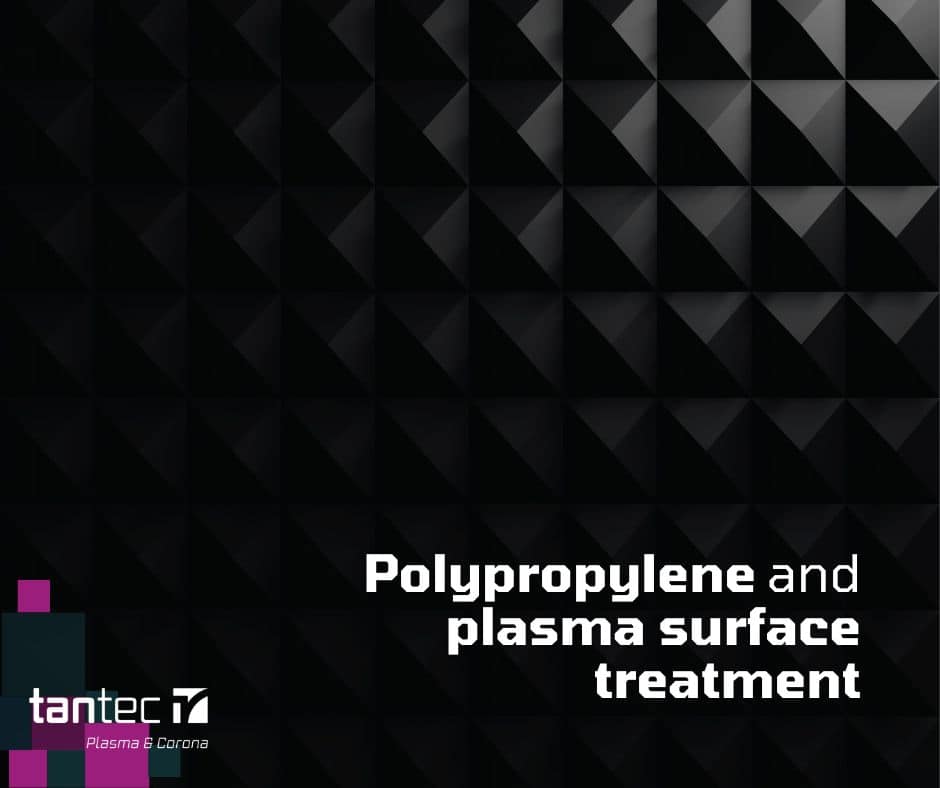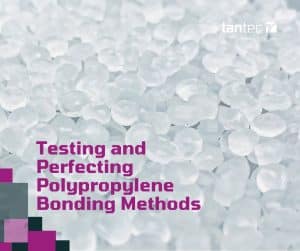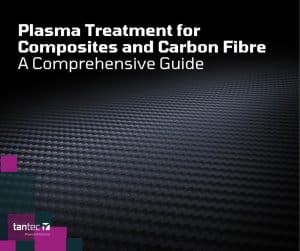
How to use Dyne Pens and Test Inks
Read this to find out the official way to get

Polypropylene (PP) is a versatile polymer widely used in various industries. However, its low surface energy can limit adhesion and bonding capabilities. Plasma surface treatment offers an effective solution to enhance polypropylene by modifying its surface properties. In this blog, Tantec UK & Ireland explore the effects of plasma surface treatment on polypropylene and its implications across different applications.
Polypropylene (PP) is a thermoplastic polymer that belongs to the polyolefin family. Competitively priced, easy to process and frequently recyclable, PP is a versatile material with a wide range of applications due to its unique combination of properties.
Here are some key characteristics of polypropylene:
Due to its wide range of desirable properties, PP finds applications in various industries, including packaging, automotive, textiles, consumer goods, electrical and electronic components, medical devices, and more. It can be found in products such as food containers, automotive parts, carpets, ropes, pipes, laboratory equipment, and packaging materials, to name a few.
Plasma surface treatment modifies the surface properties of PP enhancing the wettability, surface energy, adhesion, and bonding capabilities. This opens up a wide range of possibilities for polypropylene in diverse industries, enabling improved product performance, increased design flexibility, and expanded application potential.
Improved Wettability and Surface Energy
PP possesses a low surface energy, which can hinder adhesion of coatings, inks, and adhesives. Plasma surface treatment introduces polar functional groups to the polypropylene surface, increasing its surface energy and improving wettability. This allows for better wetting and spreading of liquids, ensuring proper adhesion and bonding. The modified surface enables coatings to adhere more uniformly, inks to print more accurately, and adhesives to create stronger bonds, opening up new possibilities for polypropylene in various industries.
Enhanced Adhesion and Bonding
Plasma surface treatment significantly improves the adhesion properties of PP. The introduction of polar functional groups creates active sites on the surface, promoting chemical bonding with coatings, adhesives, and other materials. This enhanced adhesion ensures robust and durable bonds, increasing the structural integrity of polypropylene components. Applications such as automotive parts, medical devices, and consumer goods benefit from improved adhesion, leading to enhanced performance, longevity, and reliability.
When additional materials are added to polypropylene before plasma surface treatment, several things can happen depending on the nature of the added materials and the intended purpose. Here are three materials that are added to polypropylene, to allow for better bonding and increased surface energy
Natural fibres
When combined with natural fibres, such as jute, hemp, or bamboo, the benefits are amplified. Plasma treatment modifies the surface of both polypropylene and natural fibres, improving their compatibility and adhesion. The treatment increases the surface energy of PP, allowing for better bonding with natural fibres, resulting in reinforced composites with enhanced mechanical properties. This combination offers a unique blend of lightweight, durable polypropylene and the sustainable, renewable properties of natural fibres. The resulting materials find applications in automotive, construction, and packaging industries, providing a greener and high-performance alternative.
Glass fibres
Glass fibres, known for their high strength and stiffness, provide reinforcement to PP composites. Plasma treatment modifies the surface of both polypropylene and glass fibres, improving their compatibility and adhesion. The treatment increases the surface energy of polypropylene, allowing for better bonding with glass fibres, resulting in composite materials with enhanced mechanical properties. The combination of PP, glass fibres, and plasma surface treatment creates lightweight yet robust materials, suitable for applications requiring strength, such as automotive parts, aerospace components, and structural elements in construction.
Talc
Talc, a naturally occurring mineral, offers improved stiffness, dimensional stability, and heat resistance to polypropylene composites. When combined with plasma surface treatment, the compatibility between PP and talc is enhanced, resulting in better dispersion and bonding. Plasma treatment modifies the surface of both polypropylene and talc, increasing their surface energy and promoting adhesion. The combination of PP, talc, and plasma surface treatment leads to composite materials with enhanced mechanical properties, reduced shrinkage, and improved heat resistance, making them suitable for applications such as automotive parts, electrical components, and appliances.
In conclusion, plasma surface treatment offers a transformative solution for enhancing the properties of PP. By subjecting polypropylene to low-pressure plasma discharge, its surface energy is increased, leading to improved wettability, adhesion, and bonding capabilities. The treatment opens up a world of possibilities for polypropylene in various industries, including automotive, packaging, textiles, and medical devices.
With plasma surface treatment, PP can now be effectively combined with natural fibres, glass fibres, talc, and other materials, creating composite materials with enhanced mechanical strength, dimensional stability, and heat resistance. This technology unlocks new levels of performance, versatility, and sustainability for polypropylene, allowing it to meet the evolving demands of modern applications. Plasma surface treatment truly unleashes the full potential of PP, ensuring its continued relevance and impact in diverse industries.

Read this to find out the official way to get

Polypropylene (PP) bonding is traditionally a difficult task due to

Composites are becoming increasingly important in manufacturing, whether these are
40A Crossgate Road
Park Farm Industrial Estate
Redditch
B98 7SN
Tel: 01527 304 004
Email: info@tantec-uk.com
